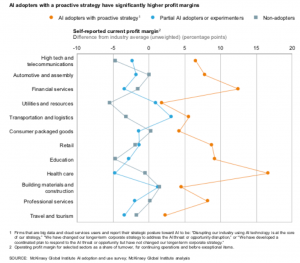Recently I attended the TechBBQ conference. Having been part of the organizing team for the very first one, I was impressed to see what it had developed into. When I came to get my badge the energetic and enthusiastic volunteer asked me if I was “pumped”, but I was not pumped (as far as my understanding of what that meant) so I politely replied that I was probably as pumped as I was ever going to be.
Inside was packed and at one point a fascist looking guy pushed me and told me to step aside, just as I was getting ready to put up a fight and stand my ground I noticed the crown prince of Denmark strolling by. So, I left him with a warning and let him off the hook for this time (maybe if I had been some more pumped…also I suspect that all of this played out as a blank stare from the point of view of the body guard)
At the exhibition floor I had the good fortune of chatting with a few McKinsey consultants at their booth. The couches were exquisite and so would the coffee have been if they had offered me some. If there is one thing McKinsey can do it is talk and do research and currently they do a lot of talk and research on Artificial Intelligence (AI). I was lucky to get my hands on some of their reports that detail their look on Artificial Intelligence in general and AI in the Nordics in particular.
The main story line is the same one that you hear everywhere: AI is upon us and it promises great potential if not a complete transformation of the world as we know it. There are however a few conclusions that we should dive into a little bit more.
The wonders of AI
In terms of investment in AI, 2/3 of businesses allocate 3% or less of investments in AI and only 10% allocate 10% or more. If you were reading the tech news you would be forgiven for thinking that 90% of companies were investing a 100% or more in AI. So, this observation alone is interesting. There is not a lot of actual investment going towards AI for the vast majority of companies. When you ask senior management and boards there is a bit of a waiting game, where they look more towards competitors moves than to the actual potential of AI.
The status of adoption is that in the Nordics 30% (compared to 21% globally) of companies have embedded at least one AI technology across their business. This could be taken to mean that the Nordics were ahead of the curve compared to the global market. It could also be due to the Nordics having a higher general level of digitalization.
These things taken together it seems that AI as a technology is still in Innovators/the early adopter category in the diffusion of innovation theory developed by Everett M. Rogers. Rogers developed a framework and body of research that has been shown across multiple industries and technologies that show the patterns of adopting innovations of any type. AI is one such type of innovation, just like the Iowa farmers’ adoption of 2.4-D weed spray that was Rogers initial focus of investigation more than 50 years ago. The research showed that the adoption took the form of a bell curve.

Figure 1. Diffusion of innovations, credit: Wikimedia commons
The fact that companies are waiting for competitors to use AI also clearly indicates that we are in the early adopter or early majority category, as this is typical behavior for the early adopters. Whereas innovators will go with anything as long as it is new, early adopters are more picky. Early Majority are primarily looking at what the competition is doing in order to copy them.
If we look at figure 2 we can see that companies that have adopted AI today are vastly more profitable. The logic seems to be straight forward: there is a huge potential for AI to make companies more profitable.

Figure 2. AI adoption and profit margins (source: McKinsey Global Institute )
While this is indeed a tempting conclusion, we have to be cautious. Keep in mind that the companies adopting AI may just be more technologically proficient. The AI adoption could be confounded with adopter category and technology utilization in general. It could just mean that companies more open to innovation of any kind are on average more profitable than those who are not. It is well known that especially early adopters are more profitable than other adopter categories.
To put it another way: adopting AI may result in you becoming more profitable, but is not certain that AI is the reason. What McKinsey doesn’t tell us, but I expect them to know full well, is that the reverse is also true. Investing in AI may actually set you up for failure.
AI adoption and adopter category
The issue here is that it may not be AI that is making the companies profitable, it may rather be their adopter category. The adopter category is related to their company culture. A company culture that is friendly to new technologies will behave as an early adopter and monitor the market and selectively choose solutions that they think will give them an advantage. This is what they do with any type of technology, not just AI. But we also have to remember that the reason they are successful is exactly because of their company culture and the fact that they are used to trying out new solutions.
They know that when they invest in something new you don’t just press install, next, next, finish and the money starts flowing. They know that new technologies are rough around the edges and there is going to be a lot of stop and start and two steps forward and one step back. They are driven by a belief that they will fix it somehow. More importantly, they have a sufficient amount of people with a “can-do attitude” that are not afraid to leave their comfort zone (see figure 3)

Figure 3. where magic happens
Now, compare this with organizations that have more people of a “not-invented-here attitude”. Their company culture leads them to the late majority and laggard categories. For this type of organization, innovations are something to be shunned, they know what they are doing and consider it a significant risk to do anything differently. Their infrastructure is not geared towards making experimental and novel technologies work. It is geared towards efficiently and making well known technology work in a predictable manner.
Let’s do a thought experiment about how this will play out: Karma Container, a medium sized shipping company, decides to send Fred, an inspired employee, to TechBBQ . They still have mission critical applications running on the mainframe and Windows NT servers (because Linux or MacOS are not in use anywhere) and upgrades are a major concern that has the CIO biting his nails every time. Fred comes back from the conference energized. He spoke to the same McKinsey consultants and read the same reports that I did. He pitches to his CIO that they should invest in AI because the numbers clearly indicate that it would increase the company’s profitability. The last time they invested in any new technology was to transfer their telephones to IP telephony and implement help desk technology. The CIO says ok, and they decide to try to adopt a chatbot to integrate with their helpdesk and website.
So, with a budget and a formal project established Fred starts. They wonder who in the organization would actually implement it. They go to the database administrator, who looks at them as if they were suddenly speaking a different language. He has no idea. They go to the .net developer who fails to appreciate how that could in any way involve him. They then go to the system administrators, who quickly show them to the door on account of a purported acute security event. They don’t get back to the project team either.
Remember that at this point they haven’t even started to figure out who would maintain, patch and upgrade the system or who would be responsible when it behaves strangely or who would support it. Fred quickly gives up and returns to his job of managing Remedy tickets.
Beware of AI
The purpose of this thought experiment (vaguely based on real life experience even though the names and details have been changed) is that even if AI does have much to offer in terms of profitability and efficiency it is not a realistic choice for most companies at this point. I would even go so far as to say that all AI should be avoided by most companies unless they have a track record and company culture that would indicate they could make it work.
Most AI solutions are not mature enough, that is easy enough to use, and more importantly the value proposition is speculative. If an organization is not geared towards implementing experimental technologies, they are wasting time, money and effort on trying. This is why most companies are better off waiting. This is similar to websites in the 1990ies. They were not for everyone, but today anyone can click a few times and create a beautiful site in WordPress or other CMS. Once we have the equivalent of a wordpress for AI, that is when most companies should invest.
Diffusion of innovations just takes time it cannot and should not be forced. The current AI hype is also a result of innovators and early adopters being more loud and opinion forming than most companies. Most companies are better off waiting for the dust to settle and more mature and comprehensive solutions to appear